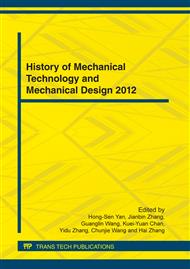p.207
p.211
p.217
p.221
p.226
p.233
p.238
p.242
p.247
The Application of Thermoelectric Cooling Module in the Vehicle's Braking System
Abstract:
The research is presented a kind of cooling device for a vehicles brake cooling system, which comprises a thermoelectric cooling (TEC) chip and a heat exchange system. The disc-brake and drum-brake systems are discussed in the research. After inputting electric power, the TEC chip provides one cooling surface which is stick on the brake system and absorbs the heat from the brake pads or shoes. The other surface releases heat which is absorbed by a recycle water-cooling system to discharge the heat by water-cooled radiator to the surrounding. It decreased the working temperature of the brake system about 30% at most after using this cooling device and increased the braking force about 30% at least. There is a temperature control device for the device which can start the TEC chip when the temperature of the brake pads or shoes exceeded 50, which is the lowest temperature that the brake pads or shoes can maintain the most performance of the braking force. The device can efficiently keep the braking force when the driver uses the brake to reduce the vehicles speed for a long time and provide the safety for the driver.
Info:
Periodical:
Pages:
226-232
Citation:
Online since:
April 2012
Authors:
Price:
Сopyright:
© 2012 Trans Tech Publications Ltd. All Rights Reserved
Share:
Citation:


